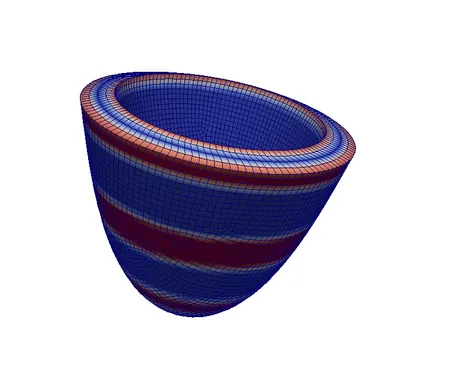Poroelasticity

Anh-Tu Vuong, Andreas Rauch, Christoph Ager and Lena Yoshihara
Modeling deformation and flow in porous media is of great interest due to its possible application areas in various fields of engineering, like geophysics, civil engineering, physical chemistry, material sciences and biomechanics. Porous media consist of one structure phase and one or several fluid phases, flowing through connected pores. A fully resolved model would lead to a surface coupled fluid-structure-interaction system, however a separate analysis of both structure and fluid phases would be computationally highly demanding due to the complex and in almost every application unknown geometry of the pore structure. However, in many cases such a direct numerical simulation is also not needed to answer the relevant questions. Therefore, special methods for describing porous flow structure interaction on a macroscopic level have been developed. Based on the mathematical homogenization theory, so called "Reference Volume Averaging" has been hugely applied in engineering science.This method leads to a continuous description of the porous medium, where fluid and solid are modelled as overlapping continua and, hence, the actual interface is not resolved explicitly. Finally, a volume coupled fluid-structure-interaction problem is derived, which enables modelling of a porous medium on a macroscopic scale without presuming detailed knowledge of the pore geometry.
Currently, we are developing Finite Element formulations treating the specialities of the Darcy and Darcy-Brinkman flow. Also, the porous media framework is coupled with various other fields, resulting in scalar transport in porous media and fluid-porous-structure interaction with contact, for instance. These complex multi-coupled problems are used for biomechanical applications, especially for cell migration modeling.